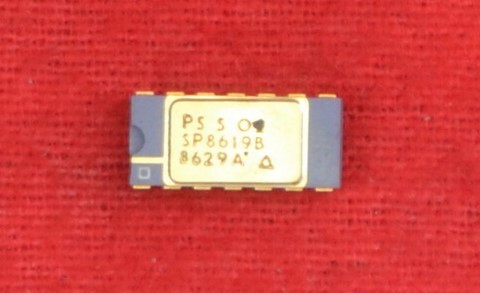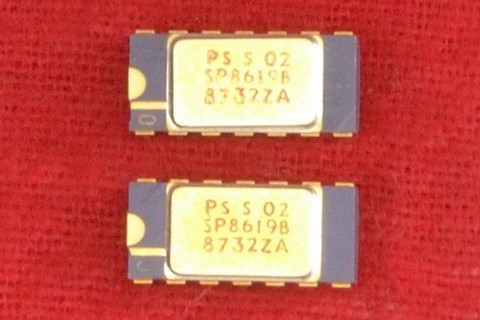SP8619 1.5 GHz Counter
Features
- DC to 1.5 GHz Operation
- 0°C to 70°C (B Grade) and -40°C to +85°C (M Grade) Operation Guaranteed at Maximum Specified Frequency and Over a Wide Dynamic Input Range.
- Complementary Emitter Follower O/Ps, ECL 10K and ECL III Compatible
Quick Reference
- UHF Instrumentation, Including Counters and Timers
- Prescaling for UHF Synthesisers
Description
The SP8619 is a fixed ratio ÷4 asynchronous emitter coupled logic counters UHF counter with a maximum operating frequency in excess of 1.5 GHz. The input is AC coupled to the signal source but can be DC coupled if it is required. The two complementary emitter follower outputs are capable of driving 100 ohm lines and interfacing to ECL with the same positive supply. The SP8619 require supplies of 0V and -6.8V (±0.35V).
Operating Notes
The SP8619 is very simple to use but normal high frequency rules should be followed for optimum performance - for example, all connections should be kept short and the capacitors and resistors should be UHF types.
The input is usually capacitively coupled to the signal source. There is an internal 400 ohm resistor connecting the input to a reference voltage; this biases the input in the middle of the transfer characteristic. The reference voltage is brought out onto pin 6, which should be decoupled to the earth plane.
The sensitivity of the device can be increased by DC coupling the input signal about earth (see Fig. 4 .)
|VCC –VEE| should be kept inside the specified 6.8V ±0.35V but the actual value of Vcc relative to earth is not very critical and can be varied between 4.2V and 5.0V with only a small effect on performance. A Vcc of about 4.6V is the optimum for full temperature range operation.
In the absence of an input signal both the DC coupled and the capacitively coupled circuits will self-oscillate with an output frequency of approximately 300MHz. This can be prevented by connecting a 10k ohm resistor between the input and the negative rail. This offsets the input sufficiently to stop the oscillation but it also reduces the input sensitivity by approximately 100mV.
The SP8619 will miscount with low frequency sine-wave inputs or slow ramps. A slew rate of 200V/µS or greater is necessary for safe operation at low frequencies.
The input impedance of the SP8619 is a function of frequency and minimises at about the same frequency as the maximum input sensitivity, so, although it can load the signal source significantly there is usually enough signal to operate the device satisfactorily when the input impedance is at a minimum input signal requirement. The worst case occurs at the maximum frequency because this is where the input sensitivity is worst.
The SP8619 series can be used in instrumentation for direct counting applications up to 1.5GHz and in frequency synthesisers.
These sample has a white ceramic case and golden pins.

